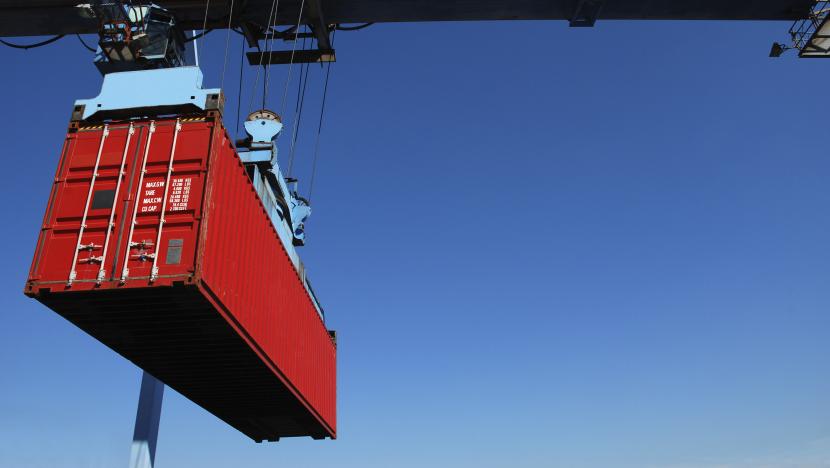A global effort
The global community set an ambitious blueprint for development in 2015-2030 to end poverty, protect the planet and ensure that all people enjoy peace and prosperity. This agenda, known as the UN’s Sustainable Development Goals (SDGs), has 17 global objectives that aim to accelerate social and economic development.
Road freight transport… is projected to increase by around 40% by 2030
Road transport is vital to this development. Indeed it is a key enabler to the SDGs. As we look to the future, the need to move goods more effectively across the planet is gathering momentum. Road freight transport, in particular, is projected to increase by around 40% by 2030 and by little over 80% by 2050. Harmonised and digitalised customs transit systems and electronic transport documents not only offer powerful tools to satisfy these rising figures, but would also facilitate intermodality.
Intermodal soft infrastructure
Optimising intermodal transport is one of the most effective ways to reduce total logistics costs, increase efficiency, capacity and provide high quality service.
It is important to find ways to alleviate ‘soft infrastructure’ pressure points in the intermodal system, such as border crossings, by using existing solutions that have a proven track record for facilitating and securing the movement of goods.
Road transport… is the first and/or the last leg of every journey
Road transport has a unique place in intermodal transport. It is the first and/or the last leg of every journey. It can be the link between different stages of the transport, moving goods between sea, rail and air, or often the only way to move goods across landlocked or developing countries. It also provides the economic stimulus for growth along trade corridors, lifting the fortunes of communities, cities and towns along the way.
A recent article in the New Yorker, profiled the significant economic development that has already taken place in cities and towns along China’s One Belt One Road corridors – with brand new communities established at critical crossings, such as the dry port at Khorgos.
Facilitating trade: improving border crossings
The high economic cost and environmental impact of border crossing bottlenecks is one area that needs to be improved in intermodal transport. The OECD estimates that revenue losses from inefficient border procedures can exceed 5% of GDP in some countries.
IRU has long advocated for ending silo approaches to border processes and unifying them under global conventions – such as TIR.
The recent CUTS International study on the Bangladesh-Bhutan-India-Nepal region showed the favourable impact of harmonised border procedures on trade facilitation, estimating that a fully operational TIR customs transit system would yield economic benefits ranging from 0.14 percent to 1.31 percent of national gross domestic product.
For seven decades TIR has been facilitating and securing customs procedures for road transport. Our work on applying TIR to the intermodal context showed considerable savings in time and costs, as a result of reduced border processes; reduction in emissions with shorter waiting times; and, conversely, a significant boost to trade as the number of transports could potentially rise.
Concretely, we recorded a 5-day saving in time when using TIR along an intermodal trade corridor linking Europe to the Middle East. Another study estimated that the use of TIR along an intermodal corridor between Serbia and Azerbaijan would reduce transit and slack times by 92 hours; and increase container use by an estimated 33%, as the same container can be used to transport goods more times in a given year.
Intermodal India-Iran corridor: we expect time savings of 40%, with a 30% reduction in the cost of trade
This year we will pilot the use of TIR between India and Iran along the intermodal International North-South corridor. We expect time savings of 40%, with a 30% reduction in the cost of trade.
The digital revolution
Moving forward, global economic and social development depends on rapid, reliable and cost-effective transport. Optimising intermodal transport through digitalised logistics – using tools such as digital TIR and e-CMR – is key to the transport industry’s contribution to meeting the international development targets that will bring prosperity, while protecting our planet.
IRU’s work to develop corridors with digitalised TIR intermodal operations, notably between Ukraine and Georgia; Azerbaijan and Kazakhstan; International North-South Corridor connecting India with Russia via Iran and Azerbaijan; various intermodal corridors connecting China with Europe; and intermodal corridors from UAE and Pakistan is only the beginning.
Rise to the challenge
In its call to action for the EU’s “Year of Multimodality”, the European Commission highlights “better infrastructure, connections, incentives and digital solutions” as the critical factors. The transport industry is more than the sum of its parts. If we work together across all transport modes, we can achieve the full interoperability that is the prerequisite for sustainability.
The sector needs to rise to the challenge, to bring about the digital, intermodal revolution from the ground up.

